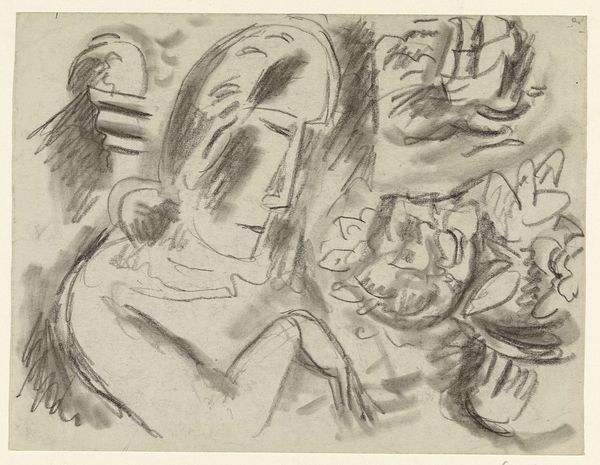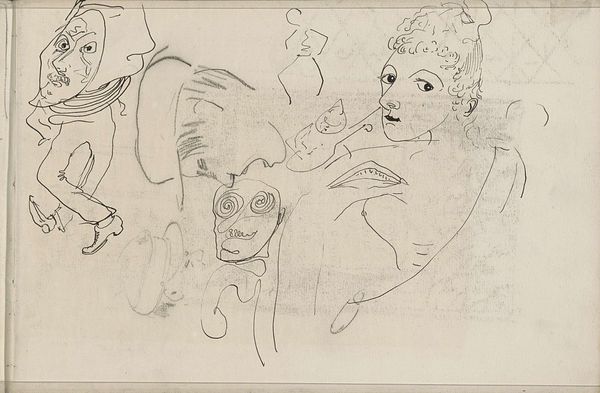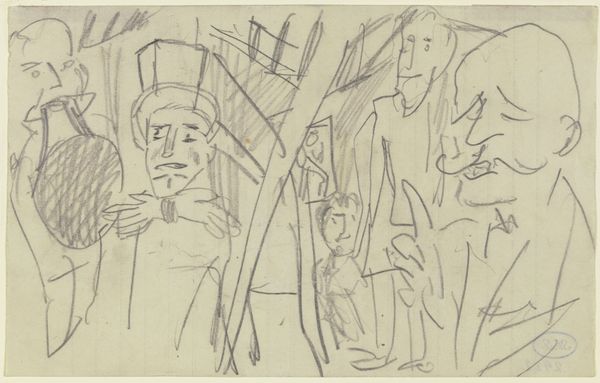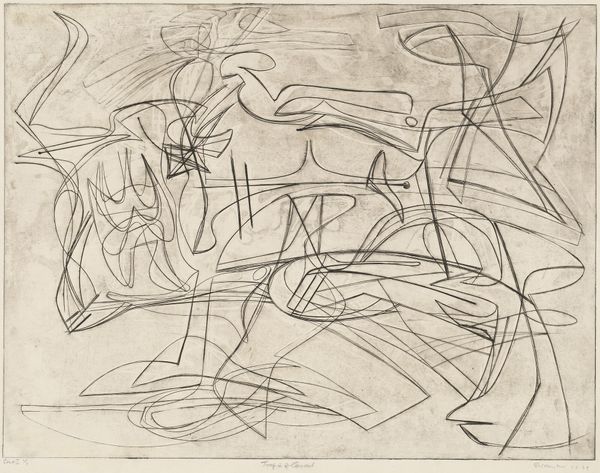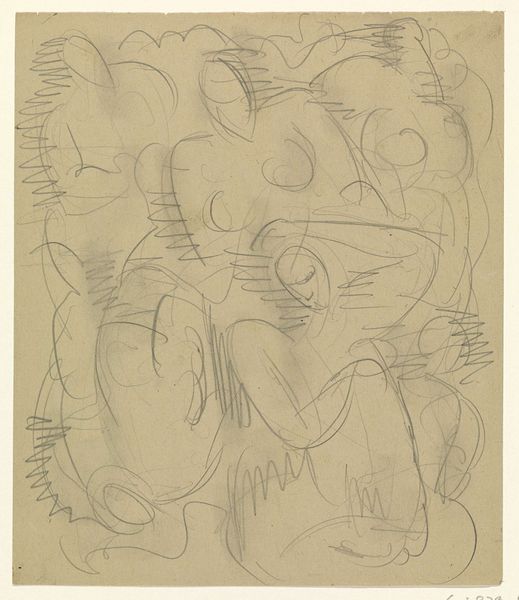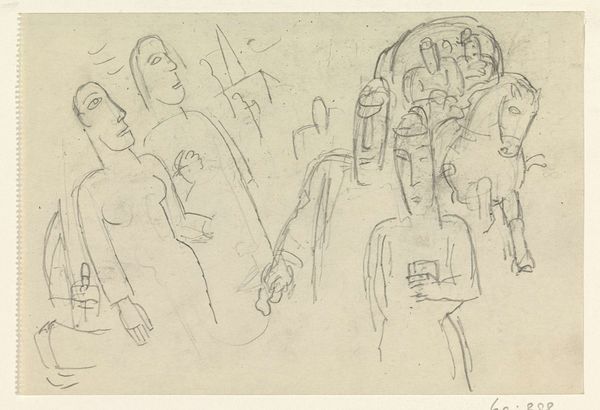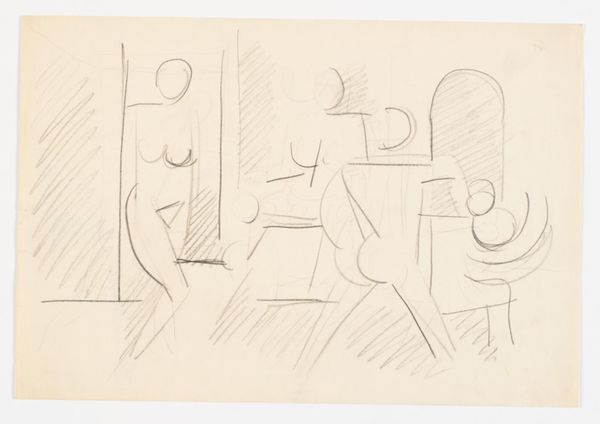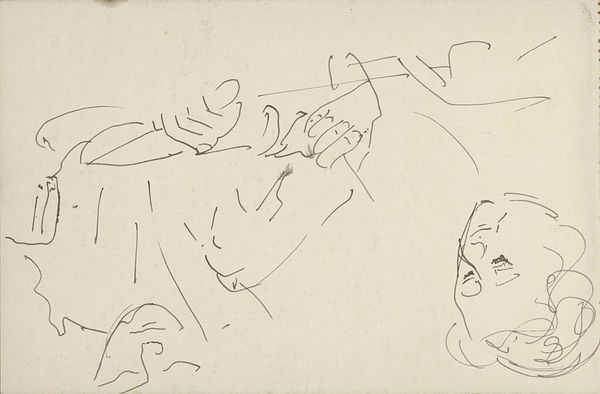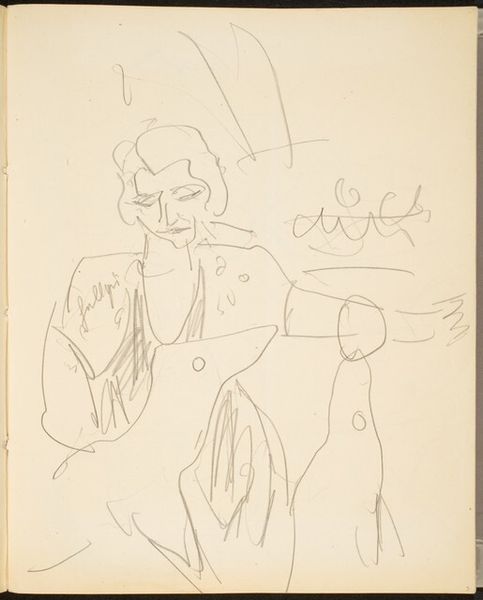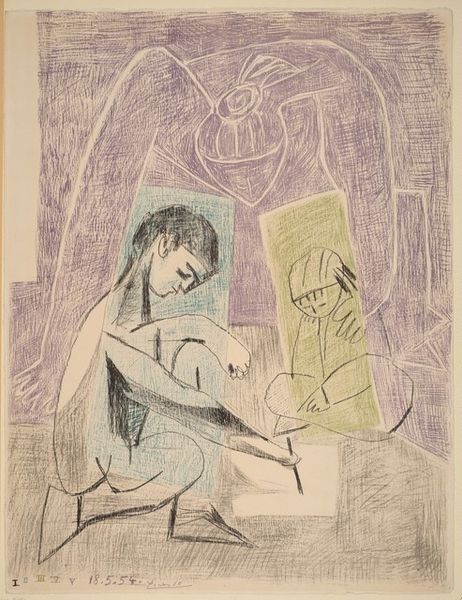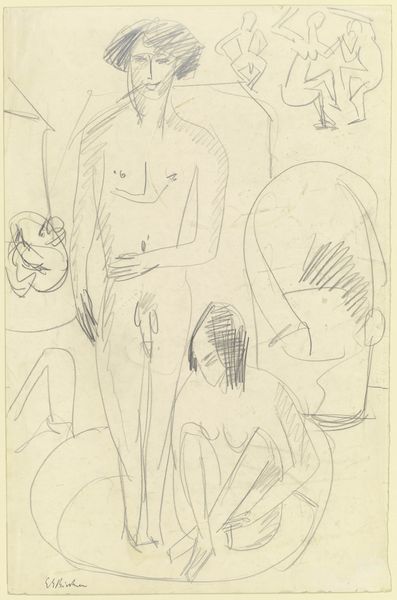
drawing, pencil
#
portrait
#
drawing
#
landscape
#
flower
#
figuration
#
pencil
#
expressionism
Dimensions: height 179 mm, width 210 mm
Copyright: Rijks Museum: Open Domain
Curator: Gazing at Leo Gestel’s pencil drawing, “Vrouw bekijkt bloemen” or "Woman Looking at Flowers", made sometime between 1891 and 1941, it feels like stumbling into someone’s dream. It's currently housed here at the Rijksmuseum. Editor: A dream, alright, perhaps a somewhat melancholic one? The grey tone and the fragility of the lines lend it a rather wistful, pensive mood. Almost as if this woman, partially veiled by flowers, is looking inward more than at the blossoms before her. Curator: Precisely! The expressiveness is certainly key. Look at the planes of her face and neck—there’s an almost sculptural quality, not so much portraying her outer likeness, but rather conveying something more essential. What's so intriguing to me is the blend of portraiture with elements of landscape, particularly with the floral motifs interwoven throughout the piece. Editor: It’s not only those flowers though, isn’t it? I see what looks like... horses rearing in the background as well as floating facial fragments...a real surreal composition. But I must confess that the loose composition of "Vrouw bekijkt bloemen" is fascinating for its almost unconstrained quality; it allows for layers of narrative that portraiture alone simply cannot conjure. One could argue Gestel is reflecting a society moving toward more individual interpretations of expression. Curator: I think so, this artwork truly opens a window into Gestel's thought process and is an incredible insight to his transition from post-impressionism into expressionism. I wonder about those other figures hiding amongst the flora; if those people exist within her memories, and dreams of people no longer around. Editor: The subtle blend of mediums—portraiture meeting landscape, infused with those expressionistic strokes—serves as a powerful reminder that art's most profound strength lies in its ability to stir dialogues with the self, culture and perhaps with society itself. It certainly opens a window to consider where art was at the time and it's influence on the time period. Curator: It reminds me how essential the fleeting and fragile aspects are to our perception, the power of pencil is such that these visions and images are captured with such fragility that it’s both strong and fleeting like the aroma of the flower the subject gazes at.
Comments
No comments
Be the first to comment and join the conversation on the ultimate creative platform.
